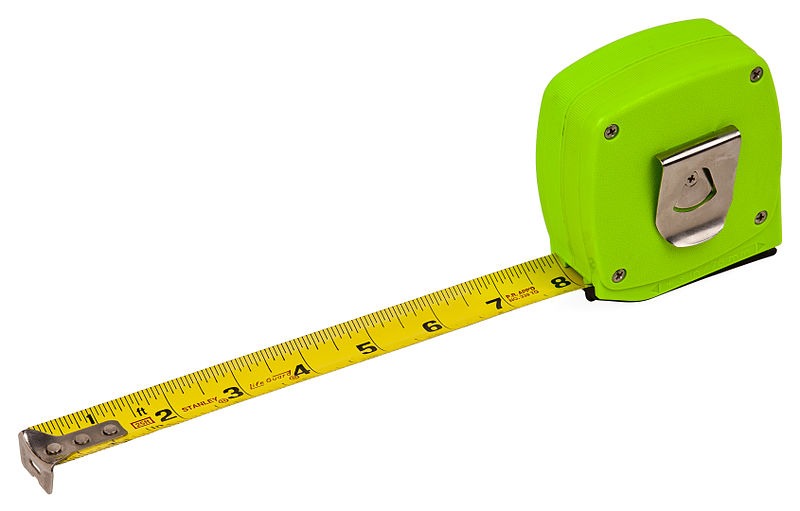Research shows that the average American has nine DIY home projects in the works.
Is one of yours hanging that gallery wall you’ve always imagined?
If so, you’ll soon find that although the task looks simple, it can be anything but. Getting your pictures to hang just right is both a science and an art, and we’re here to break it all down.
Read on to learn how to hang pictures the right way, every time. Then, check this project off your to-do list and see what else you can tackle!
Step 1: Buy a Stud Finder
The most secure way to hang a picture is to attach your nail or screw to a stud.
A stud is a piece of wood underneath your drywall used to help frame your wall. In most homes, you’ll find vertical studs that are spaced about 16 inches apart from one another.
The only problem? They’re covered with drywall!
That’s where a stud finder comes in handy. This is a battery-operated tool that helps you pinpoint exactly where your studs are located. Mark each location lightly with a pencil, in case you need to mount a heavy picture later.
Step 2: Make a Dummy Picture
In the steps that follow, you’re going to be holding your picture up to the wall multiple times. That can be an exhausting arm workout, even if it’s relatively lightweight.
To save your strength (and sanity), make a dummy picture that you can use instead!
To create one, lay your picture on the floor, on top of a big sheet of draft paper or construction paper. Mark all around the perimeter, and cut out a shape that’s the same size as the frame. If your picture is very big, you might have to tape multiple pieces of paper together to make a surface that’s big enough.
Step 3: Measure, Measure, Measure
Always measure multiple times before you hammer a hole into your wall or drill multiple holes for brackets.
Start by holding the dummy paper up to the wall in the position you want to hang it. To make sure the sides are level, grab a straight-edged ruler or a leveling tool. This isn’t a time to eyeball measurements.
Using a pencil, mark three locations:
- The edges of the frame
- The sides of the frame
- The midpoint between the top and bottom of the art
Ideally, that midpoint should rest at eye level. You shouldn’t have to look upward or downward to enjoy your art! Once all of those points are marked, you should know exactly where to hang the picture.
While this measuring step can take a while to complete, it’s important not to skip it. Contending with an unlevel picture or one that isn’t spaced appropriately apart from other pictures will mean more work down the road.
Common Types of Measuring Tape for Everyday Use
The tape measure was invented by James Chesterman in Sheffield, England, in 1829. It became a part of household equipment when Alvin Fellows improved the tape’s design in 1868. Here are the common types of tape measure available in the market.
Fabric Tape Measure
If your primary purpose of measurement is to ensure your hung pictures are correctly placed, a fabric tape measure is one of the most convenient measurements. This type of tape measure doesn’t have the hard case many people think of when they think of a tape measure, but the body and fabric have a long, flexible material designed to measure. It has the usual 60 inches length, although other types of fabric tape measure may range up to 120 inches long. These tape measures usually include inch and metric measurements for quick and easy height. When you need to switch units, flip to the band’s other side. It usually has a rigid metal strip on the end to make it easier to attach the tape measure exactly where you need to start your measurement.
Pocket of Spring Return
A pocket measure, also known as a “short tape” or “pocket tape,” is a practical measure you should always have. Most pocket tape measures come with an attached case and belt clip, making them easy to carry and use. Bag straps come in different units of measurement and different lengths. Most people imagine these types of tape measures when they think of a tape measure. They have a hard shell, and the actual tape is wrapped around that shell until it is needed, at which point it can be stretched out a bit and measured with a locking mechanism. They come in various sizes, but the smaller ones are usually 1 to 15 feet long, and the larger ones can be as long as 35 feet. If you need to measure longer distances, such as hanging your pictures aligned through the walls, you should choose a longer tape measure called a surveyor or long tape. These are available with the following measurement options: imperial, metric, or combination.
Step 4: Gather Your Tools
Once you know where you plan to hang your picture, you need to figure out how you’re going to mount it.
The easiest and most economical route is to purchase a picture hanging kit from the hardware store. This will have all of the tools and accessories you need to get the job done, including:
- Hanger wire
- Screw eyes
- D-ring hangers
- Sawtooth hangers
- Wall fasteners
If your picture is lightweight, you might only need a single nail or screw to hold it in place. However, if it weighs 25 pounds or more, you’ll be glad you took the time to locate those studs.
If it’s a really big, heavy piece (think decorative mirrors, metal art, portraits, etc.), you might need a plastic wall anchor to securely fasten it in place. Or, you can use a mounting bracket to mount the art itself.
Whatever tools you decide to use, make sure they’re appropriate to the hanging surface. For instance, a drywall screw isn’t designed for a wood wall, nor is a wood screw designed for drywall. If your picture hanging kit doesn’t include all of the pieces you need, visit your hardware store and ask for any items you’re missing.
Then, use a hammer or drill to mount the correct hardware in place. Before you do so, tape your dummy paper in the right position to mark where your holes will go. You can even hammer or drill right on top of the paper!
Step 5: Hang Your Picture
With your positioning down pat, you’re ready to hang your picture on your wall! If you measured and leveled everything correctly, this step should be an easy one.
One way to make sure the corners of the frame don’t scratch or scuff up your wall? Add a little bit of adhesive felt to the corners! This is easy to find at the hardware store and can make a major difference, especially if you plan to keep your pictures up for years to come.
If you can’t find felt, simply roll up little pieces of masking tape and stick them to any surface where your frame might come into contact with the wall.
Now You Know How to Hang Pictures! What’s Next?
Decorating your space is one of those homeowner tasks that sounds simple at the beginning but can snowball into a disaster if you aren’t prepared or don’t know what you’re doing.
That’s why it pays to know how to hang pictures the right way! With these five simple steps, you’ll be ready to spruce up your rooms in no time, adding artwork, family portraits, children’s drawings, and more. Just don’t advertise your new skills, or you’ll be the go-to handyman of the neighborhood!
Looking for more ways to live, work, and play the right way? We’ve got you covered on our website! Keep reading for all of the informative content you crave.


